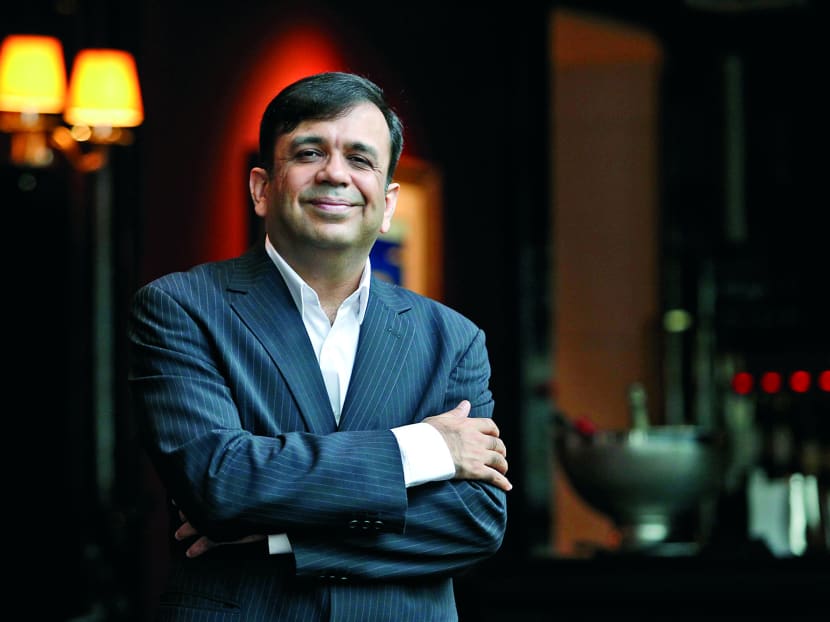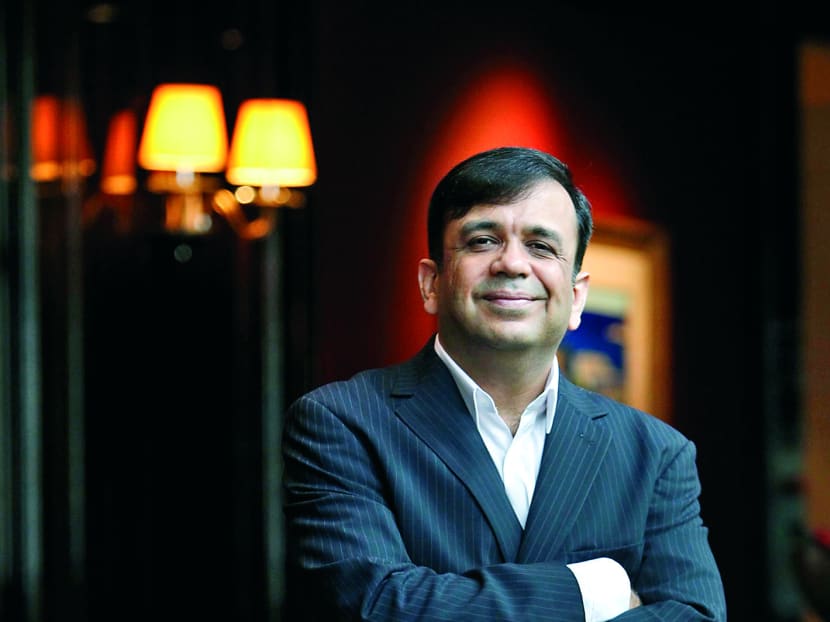A heart for HR
Less than two years ago, Internet giant Yahoo! was in a state of flux, struggling through a series of changes as it saw chief executives come and go. Morale among employees took a hit — thousands had been retrenched over the years and many pondered the fate of the company, which had been lagging behind rivals such as Facebook and Google.


Less than two years ago, Internet giant Yahoo! was in a state of flux, struggling through a series of changes as it saw chief executives come and go. Morale among employees took a hit — thousands had been retrenched over the years and many pondered the fate of the company, which had been lagging behind rivals such as Facebook and Google.
Months later, with Chief Executive Marissa Mayer at the helm, employee morale is on the rise and more people are seeking to join the revitalised 20-year-old company. Yahoo! now gets up to 17,000 resumes a week, from 2,000 previously, while the attrition rate has halved to a single digit. And as the company seeks to rekindle revenue growth, it has seen a doubling of monthly mobile users to 400 million, making up half of the monthly users of the company’s online services.
A key to the remarkable turnaround has been the company’s strategy to put people first, as the “starting point”, says Mr Vineet Gambhir, who in October last year became the company’s first Vice-President for Human Resources in the Asia-Pacific — a testament to Yahoo!’s desire to invest in talent in the region.
Mr Gambhir, 42, oversees HR operations in 17 countries and two joint ventures, and manages an extended team of 70 people. It is a role he views with pride and passion, he says. “For us (Yahoo!), people come first before revenue, it’s the starting point,” he says. “It’s the most exciting thing that (HR leaders) can ever come across. People are our passion as HR leaders.”
THE PEOPLE CONNECTION
Speaking intensely over lunch at St Regis Singapore’s Brasserie Les Saveurs, the self-confessed “people guy” delves into the topic of talent and people. A trained engineer, Mr Gambhir recalls his first job as a design engineer: “I used to work on the factory floor … I would spend a lot of time with workers and managers, understanding what motivates them, understanding how they organised themselves.”
It eventually led the electrical engineering graduate to pursue a master’s degree of business administration (HR) from the University of Maryland in 1994. “I was born in the United States, but grew up in India and you had only two choices at that time … You could be a doctor or an engineer,” he says, humourously recalling that an attempt to dissect a frog in biology lab put an end to his medical aspirations.
He adds: “Engineering comes naturally to me because I’m very analytical in the way I look at people problems.”
The priority Yahoo! places on talent was something Mr Gambhir experienced first hand before he joined the company. Having heard about the opening at the tech firm, he expressed interest in finding out more: Twenty minutes later, Yahoo!’s hiring manager had called him to chat.
The “lightning speed” with which the company reached out to him left an “amazing impression”, he says. That, and all the positive reviews he had heard about the company.
“There is no hierarchy in this company. People are very free to express what’s on their mind,” he says.
Outlining various initiatives that have been implemented since Ms Mayer joined in July 2012 — from offering employees free meals and their choice of laptop and smartphone to holding weekly sessions where she address issues and questions from employees — Mr Gambhir says: “It is just that atmosphere we create in the company, which simply ‘breathes innovation’.”
CULTURE THAT BINDS
With companies in Singapore facing a tight labour market, the competition for talent is all the more intense. When asked about retaining talent, Mr Gambhir believes it boils down to culture. It is what binds people, he says.
People go home after work and talk about what they worked on, who they met and what they did, he points out. “Your experience is what drives you and how your day went is a function of the culture in the office.”
At Yahoo!, it is the culture of innovation that excites employees and makes them stay, he says. “When you are making a difference ... you are excited because you did something that touched people.”
Ms Mayer’s ban on working from home had initially stung employees (and drawn criticism from various quarters), but Mr Gambhir points out that it created an atmosphere of collaboration and innovation.
“We really needed all hands on deck to collaborate and utilise the synergies among staff who work on design, engineering and marketing,” he adds, citing successful products such as the Yahoo! weather application.
“Once somebody has resigned and you give them a counter-offer — that’s not what retention is all about because it’s a patch,” he stresses, adding that diagnostics would help companies understand the root cause of, say, a spike in attrition and how to address it. “You think spending S$3 million would solve it (attrition) … but the actual issue could be engagement, or taking care of people and just communicating.”
PAINTING A BEAUTIFUL PICTURE
Prior to Yahoo!, Mr Gambhir was APAC Head of Global Staffing at Cisco. He has also worked as Head of HR at HCL America, a technology firm, and spent more than 10 years in multiple HR functions at Intel. His jobs have led him to work in diverse markets, including the US, China and India.
When asked about the differences in work culture across countries, Mr Gambhir, who comes across thoughtful in his comments, is slightly hesitant, unwilling to generalise. He repeatedly stresses that his views are based on his personal experience in specific settings.
“If I look fundamentally across the workplaces … the passion, the excitement people have is very consistent,” he says. What differs is the communication styles.
“All of us as leaders have a canvas and a brush and the objective is to work together to paint a beautiful picture. The degree to which you want to put the strokes … that degree varies according to the setting.”
In Shanghai, where he was based before Singapore, “sometimes I felt I had to sketch it out a bit more”, he recounts. Being passionate, the people “want to make sure it is exactly how you want it so that precision of what is in your mind is more important”.
In Singapore, “the style can be a bit broader here because it is a global mindset, people could be more vocal. They could just pick up the brush and say ‘Wait a minute, I want to draw this line for you better’”.
How then does he respond to the different communication styles? “You adapt to what the listener is comfortable with,” Mr Gambhir replies matter-of-factly.
At the same time, he also points out that distinct cultural styles were more apparent about 20 years ago, when the concept of working across boundaries was unusual. “Today, it’s a way of life,” he notes. “What would be a distinct cultural style gets morphed in a global setting, because everything I do ... is global. So when I am working with European counterparts, naturally my style would morph.”
After more than a decade of globalisation, there is now a new generation of “international talent” who can go anywhere to work. “We don’t even have the need for a cultural orientation in corporate settings anymore because people travel so much now.”
SAYING ‘I CARE’
There are various business initiatives that Mr Gambhir has spearheaded over the years that he is really proud of. In the US, for instance, he led the design of a car-racing game to motivate the sales team. Employees move ahead in the game when their sales numbers are good, and fall behind when they do not do well.
It brings a smile to his face, he adds, when he is able to make a difference to the business road map — for instance, by helping see the company through a major transformation. Still, one of his proudest moments comes when he is appreciated for helping an employee through a rocky patch.
It is the biggest challenge of his job, he says, when employees share with him the private difficulties they face, such as a health issue or a loss in the family. “I have to bring in Vineet as a dad, as a husband, as an employee,” says the father of a 10-year-old girl and nine-month-old twins.
“You are then a human being saying ‘I care’ and as a HR professional, you are more exposed to that.” Employees could break down and cry; it can be emotionally draining, he acknowledges. “You have to deal with that, give them the best professional advice ... and bring the best of the company’s resources to help them get through it.”
He adds, a tad wistfully: “Sometimes, you want a magic wand to wipe out everybody’s problems, but you have to work through them because some things are not in your hands.”
He recounts having to let an employee go about 10 years ago, when his company at that time was going through a restructuring. “But the manner in which we handled that was with a lot of respect, care and making sure the employee landed well.”
A few months ago, the employee found him on Facebook and told him: “I just wanted you to know I tell my kids you are the best HR person I worked with.”
Mr Vineet says: “So it’s challenging, but when it’s resolved it’s very gratifying and very satisfying.
“When people ask me ‘why do you choose HR?’ ... I tell them it’s because of that people connection, it’s most important to me in my life and this just gives that to me.”
CORRECTION (March 22, 2 pm): An earlier version of this article misspelled Yahoo! CEO Marissa Mayer’s name. We apologise for the error.





